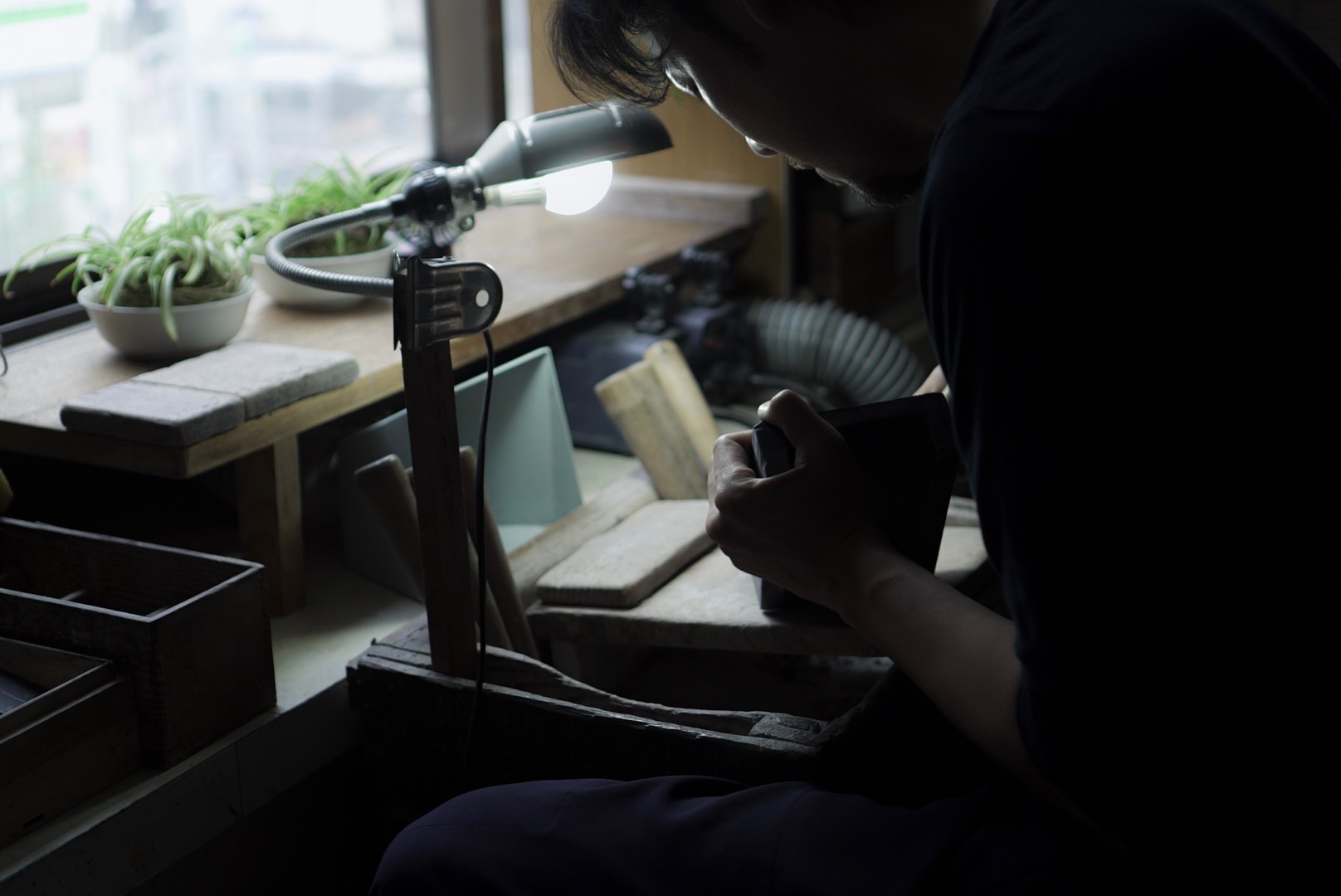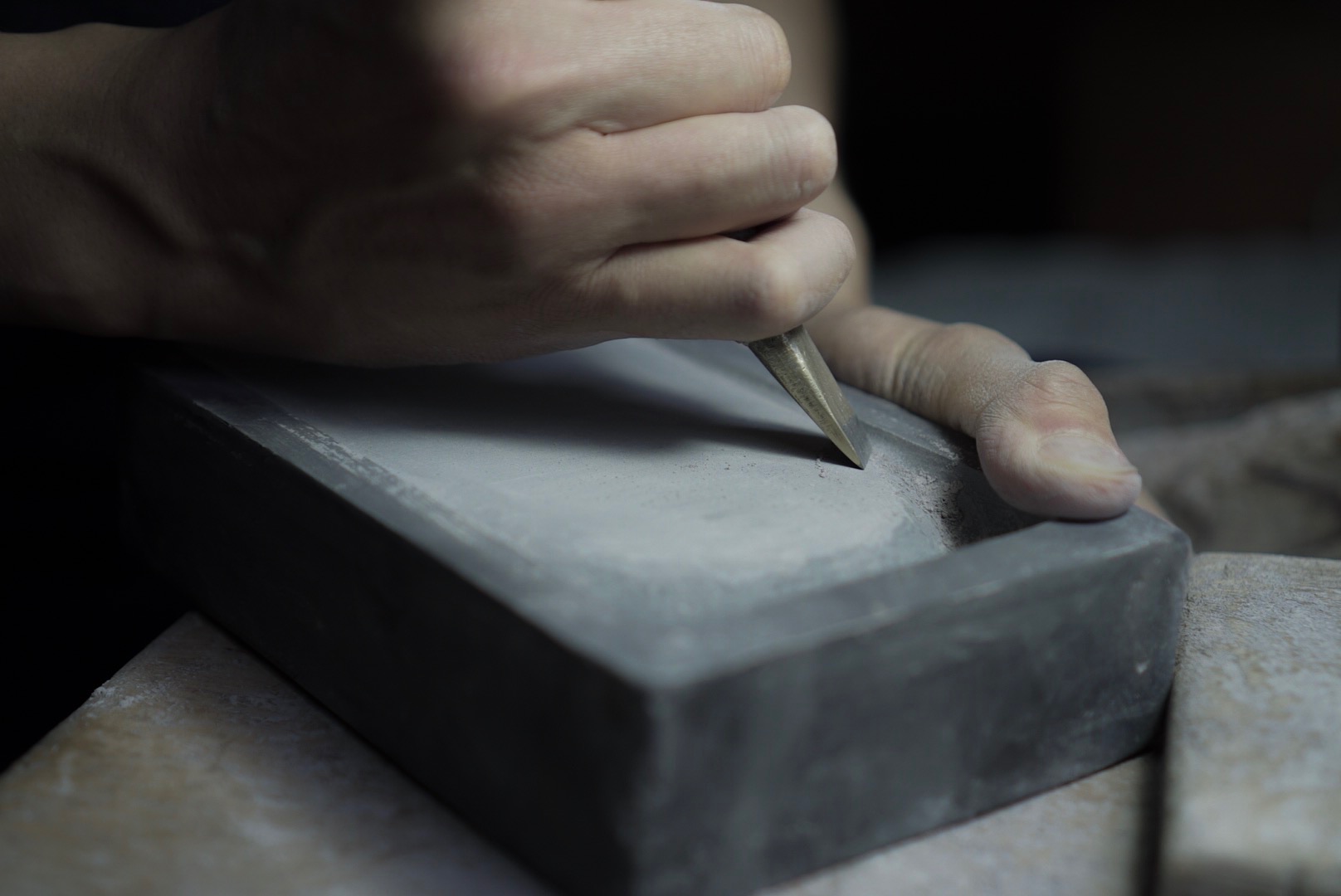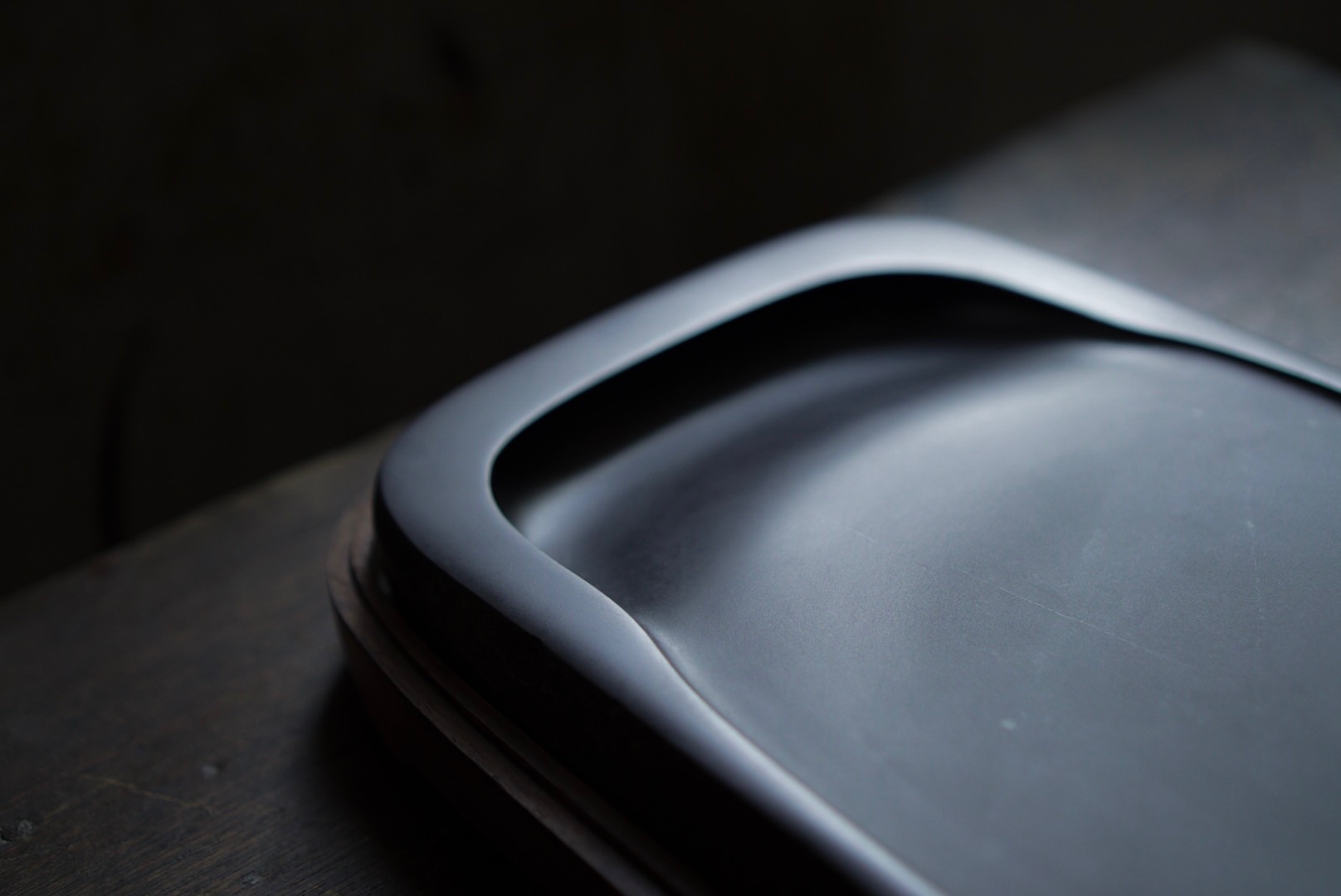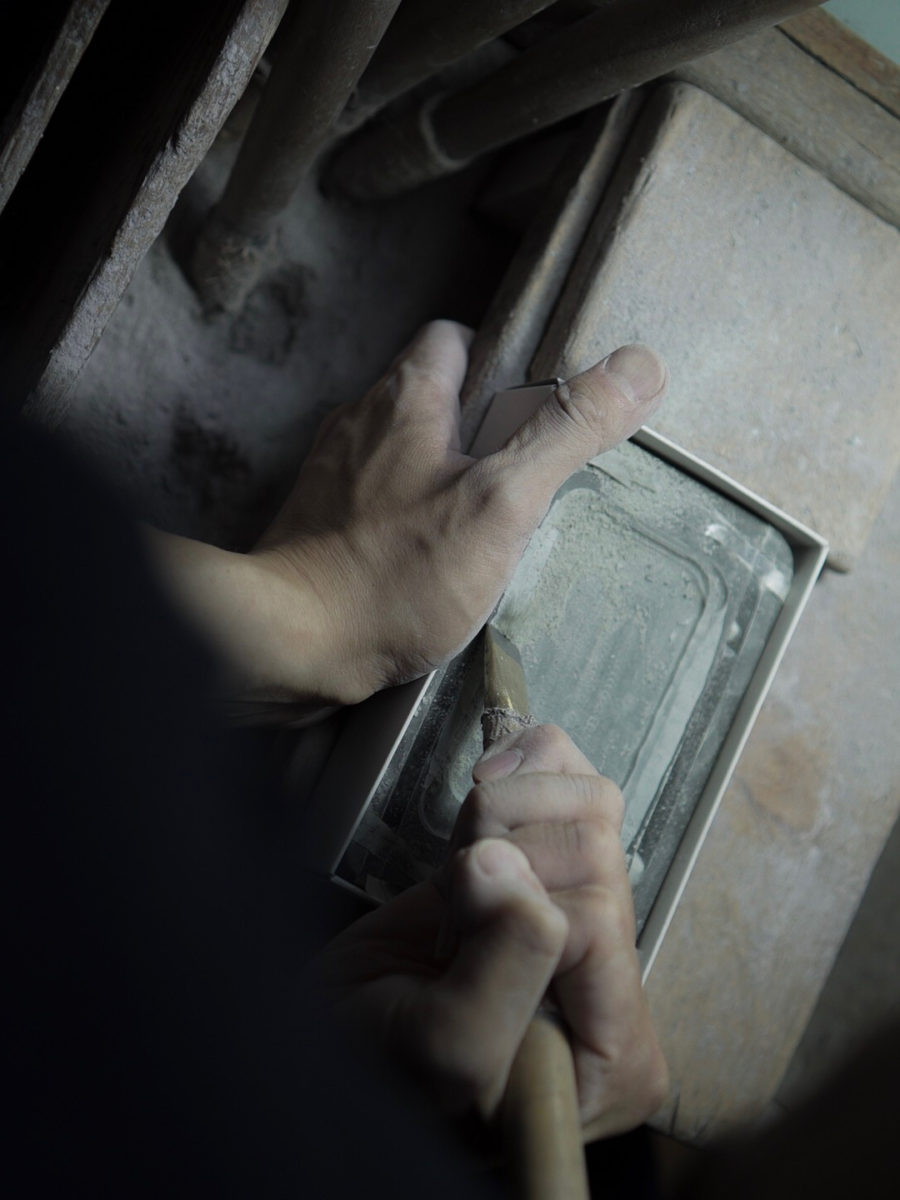Ink Stone, Ink, Brush, and Paper
In Chinese and other East Asian calligraphic traditions, these four are called “The Four Treasures of the Study”. Unlike the other three, ink stone can be used permanently with proper care, and is loved by many writers as an antique. Ink stone is a stone mortar for the grinding and containment of ink and many Japanese has an experience in using them, for calligraphy is included in the Japanese school curriculum.
Picking up where we left off in the last article, we had a chance to interview Mr. Takashi Aoyagi, who calls himself the “Seikenshi” or the “Ink stone Artisan”. Being the fourth generation of HoukenDou, which is a calligraphy store and ink stone workshop in Asakusa, he researches and produces wide variety of ink stones.
Part 1:Ink stone craftsman Takashi Aoyagi and his title “Seikenshi”

Mr. Aoyagi fulfills customer’s needs with a stone. He talks about the importance of communication when doing so.
The customer’s needs varies and everyone has different situations. Some of them have a specific stone they want and some of them are flexible with it. If their request is the finest Duan inkstone, I use the stone from the old mines in China. Even if they don’t have any specific requests about the stone, I take time to have a deep conversation with the customers to understand their values. I want to create inkstones that my customers will be able to spend their lives with. Communication is necessary to do so.
After the communication is when the crafting begins.

Even if the customer doesn’t have a specific stone they want, he communicates deeply to fully understand what suits them. Not only did Mr. Aoyagi train his technique in Japan, he also has an experience learning in China. It was his father’s advice to do so.
I feel like I can understand what my father told me 20 years ago. He wanted me to learn about the core values of ink stones. Ink stones came from China and evolved into what we use in Japan today. But those ink stones are Japanese versions and not the original ones that have been used in China for more than 1500 years.
Studying about ink stones in Japan means you are learning about the ones that developed in Japan. But what my customers seek in our workshop is not always the mass produced ink stones. I needed to learn the traditional techniques, core values of the traditional design, and history of how ink stones evolved into many shapes.

He now understands why his father, also his teacher, wanted him to study in China. How did ink stones come about? How did it evolve into what we know today? Those questions lead him to study and sharpen his skills as an ink stone meister.
Creating ink stones with passion and communication, you can see why he is one of the most trusted ink stones craftsmen in the world.
To be continued
Part 1:Ink stone craftsman Takashi Aoyagi and his title “Seikenshi”
